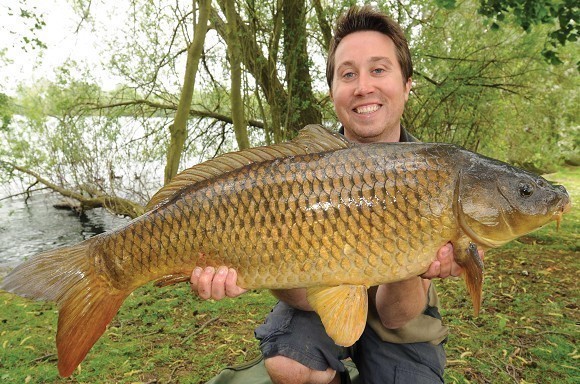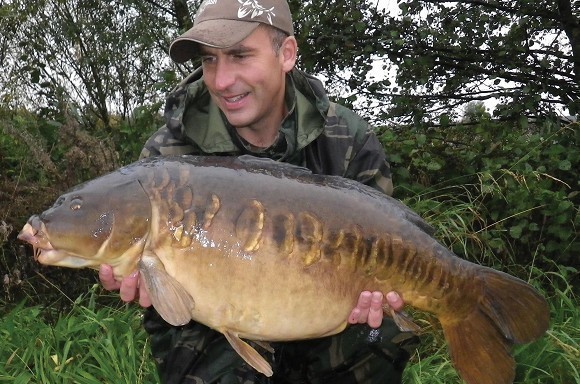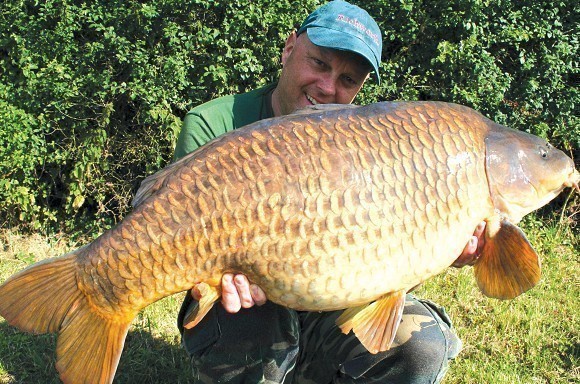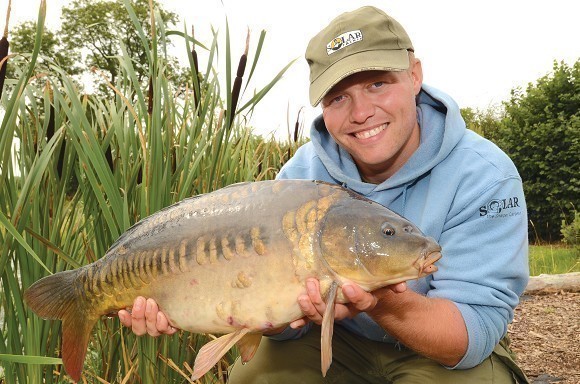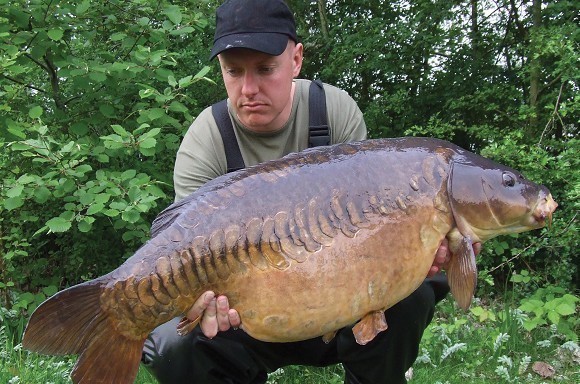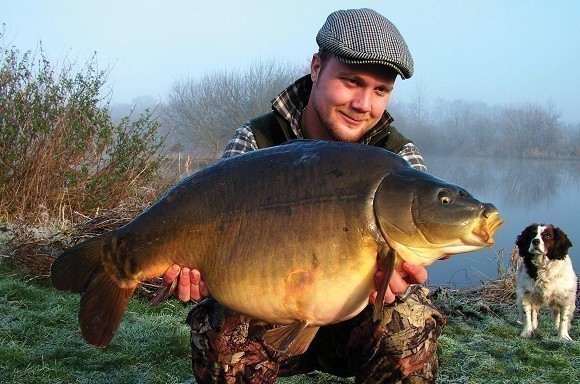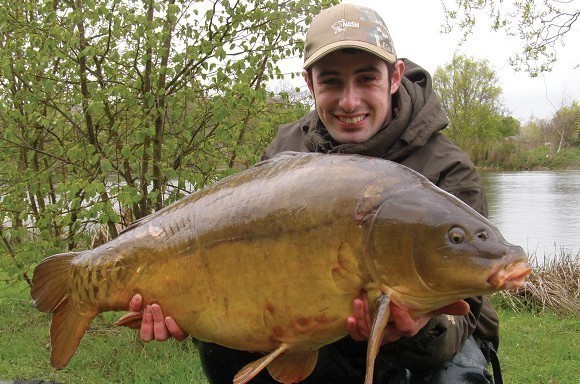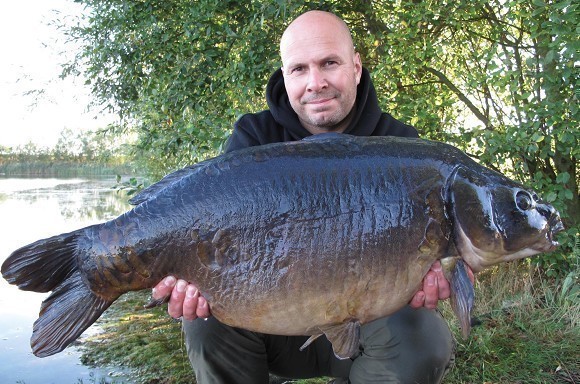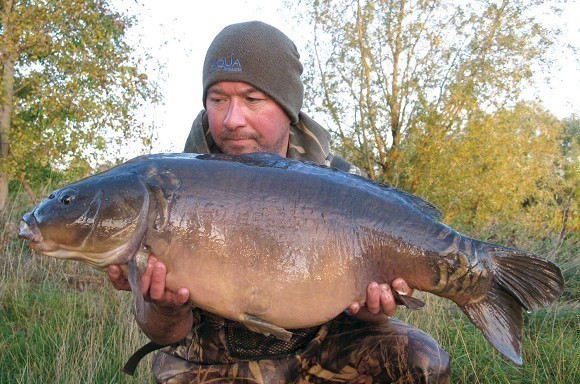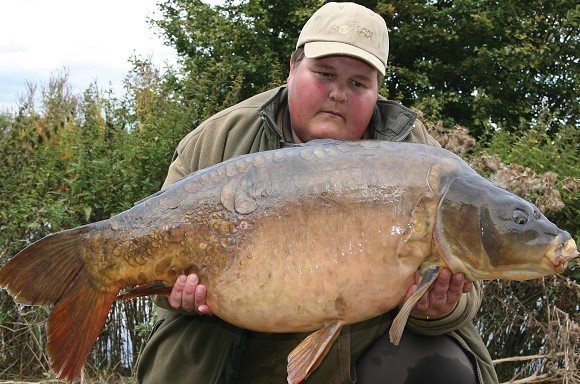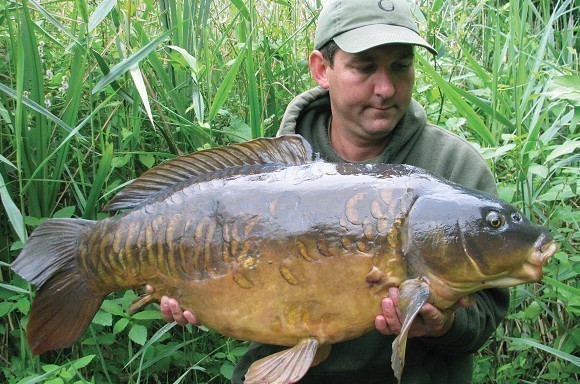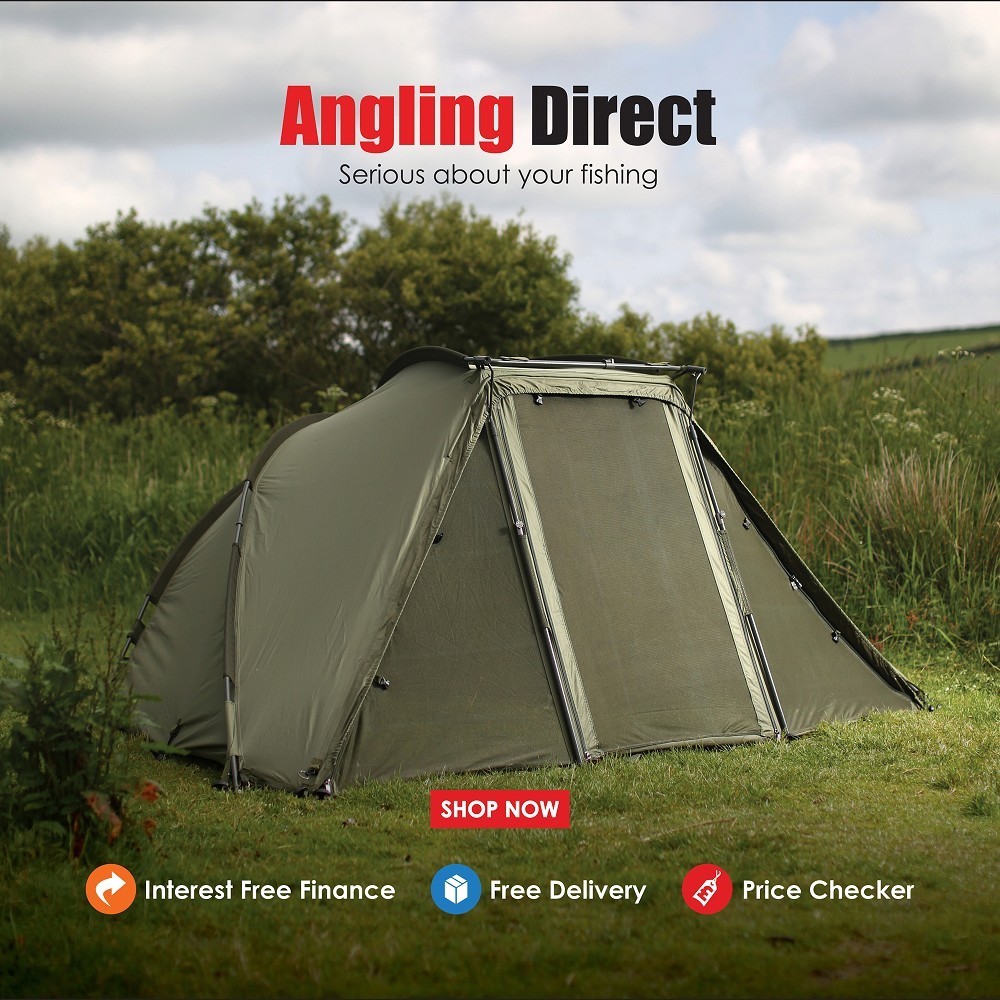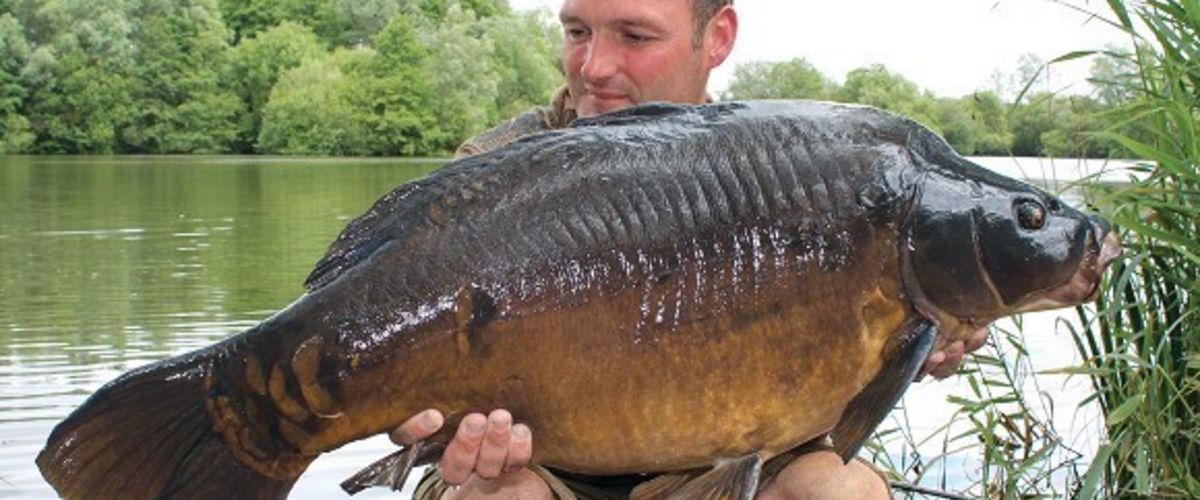
Do rigs matter as much as we think?
We've all heard and read: "I only use three rigs for all my carp fishing" and "rigs don't matter." Do you really believe this is the case?
Rob Hughes
In summary: 'I have three...'
“Whilst there are loads of different rigs available, it’s fair to say that I do use just three rigs for 90% of my fishing, and the rig is a very important factor, as if it’s not efficient or is fished incorrectly, then your catch-rate will suffer.
“If I’m boilie or long-range fishing it’s got to be a helicopter of Coretex with a shrink tube kicker which can be fished as
a bottom, snowman, or pop-up rig. If it’s shorter-range fishing then it will be a Snare braided hooklink popped into a bag and once again this can be fished balanced, popped up or on the bottom depending on the bait, and finally, but only when I’m ‘quick hit’ fishing where little casting is required, a Choddie is used. Throw in a Zig for occasions where they are worth
it and that’s my rig armoury.
The only tweaks will be whether it’s a pop-up or bottom bait, the hook size and also the length of the shrink tube kicker.”
Rich Wilby
In summary: 'I'm constantly tweaking'
“I’m the type of carp angler who is constantly tweaking rigs and hookbaits during most sessions. This is partly due to my impatience but also because I fish the majority of time on well-stocked day ticket venues which are constantly under angling pressure. Busy day ticket lakes are not for everyone, but the more time I spend on them the more addictive they have become. Being able to tweak my rig or bait and get an instant result gives me a buzz and I like being kept on my toes, plus trying to be one step ahead of the others.
“When I have fished big low-stock waters or carp fished on the rivers, 90% of my angling is purely based on getting my location right and pre-baiting. My rigs will always be simple and strong and I will only adapt them to suit the type of lakebed. Carp in these types of venues can be easy to catch and get feeding, it’s the time and effort spent finding fish which makes things difficult and massively rewarding when you succeed. Many ‘big fish’ anglers I know use the same one or two rigs all the time. But put those anglers on any top day ticket water and you would see them tweaking and changing things constantly until they were getting bites.
“One of the best tweaks you can do to most rigs is simply lengthen or shorten it, long Hairs or big hookbaits are other things that have earned me a few extra carp. Keeping things simple but making little changes are the best way to change things and then you can soon learn what is making the difference to your results.”
Simon Crow
In summary: 'Rigs do matter - just keep it simple'
“Of course an angler’s rig matters. Whoever posted/wrote that, they don’t know anything about carp fishing. However, I don’t think the topic of rigs is as difficult as locating the fish or designing a good bait. It’s made out to be a complicated subject by the amount of rigs that are now available and the companies trying to sell their ideas and components. There was a time when I knew the names of all of the top rigs, but these days I could only identify the main ones because most just go over my head as they are so complicated it is ridiculous.
“I base my fishing on simplicity and like to work from one rig, a rig I have used for more than twenty years. It is a Knotless Knotted piece of braid with a line-aligner. It’s suitable for bottom baits, pop-ups and balanced baits so is perfect for the angler like me who fishes a variety of waters. For UK waters I tend to go with a size 6 or 8 hook, a Fang Twister type, and only tend to change the length of hooklink and Hair depending on the situation. I’ve caught carp on as little as only a few inches right the way through to 3ft over thick weed, and lengthen/shorten the Hair depending on what size/type of bait I’m using.
“Like I say, it’s so simple people will look at it and probably choose the more complicated rigs ahead of it, thinking they will produce more carp. The fact is they won’t necessarily because a successful rig is governed by confidence in using it as much as its design and components.”
Tim Childs
In summary: 'There's three major points to consider...'
“When it comes to rigs and presentation, my choice is dictated by three major points, not by what someone else says is the latest all-singing and dancing presentation.
“Firstly the lakebed and terrain I am fishing over, whether the bottom is weedy, gravel or silt. This will be my number one influencing factor. If your swim was full of weed with small areas that were clearer, then perhaps a solid PVA bag fished onto the spot could produce the goods.
“Secondly, the baiting strategy will influence my choice. For example, if I am fishing a wide scattering of boilies over a medium to soft silt and mud bottom then my choice of rig would usually be a 10- to 12-inch semi soft coated hooklink with either a very low set balanced pop–up or wafter on the hook.
“Thirdly, the distance I needed to cast would be my final factor to consider. Small helicopter or ‘Chod’ type rigs simply cast further than in-line or lead clip set-ups so if extreme-range was required then these rigs would be considered.
“Rig choice is a simple one, choose what allows you to present your rig on the lakebed you’re fishing on in a way that allows the fish to get the hook into its mouth easily, use the sharpest hook available and you should succeed. Just to highlight that final point again: use the sharpest hook you can.”
Carl Sharp
In summary: 'A little experimenting never hurt.'
“I think that the age old saying, ‘there’s more than one way to skin a cat’ comes to mind every time I hear a debate on rigs. There are new ‘variations’ of tried and trusted combinations coming to press on a weekly basis and will more than likely all be able to land that special capture on a given day. I personally like to try and keep things as minimal as possible, without adding all the extra metal (rig rings, swivels etc.), although I must admit that every now and then a little experimenting never hurt anyone (making sure that everything is 100% safe of course!).
“I like to base my starting preferences usually around four rigs (two pop-up rigs, two bottom bait rigs), and only tweak when/if need be. If I was asked by someone new to the sport, then I would definitely advise them to keep things as simple as possible and emphasise on understanding the importance of how the mechanics of the rig work and only tweak/readjust to overcome the given situation.”
Ed Betteridge
In summary: 'Make sure you pick the right one...'
“I do think rigs are important to a degree, but it is more important to fish the right rig to the right situation. I have seen bottom bait rigs cast into heavy weed and Choddies cast onto clean gravel that is surrounded by high weed, both these presentations are far from ideal and often result in a blank.
On extremely pressured waters a slight tweak to a rig can produce bonus fish, but on the vast majority of lakes, a rig change from say a KD to a Multi Rig won’t have a dramatic effect. What is more important in my opinion is getting the dynamics of the rig right.
“Since I have been coaching I have seen a lot of rigs tied up very slightly wrong which alters the way they act in the water and the fish’s mouth. It doesn’t take much to get a rig wrong, a bottom bait rig with a Hair that is a few millimetres too short will not allow it to turn and catch hold in the fish’s mouth so well. Or if a pop-up is fished on a rig where tubing is used to secure the Hair on the bend of the hook, this will cause the hook to exit the fish’s mouth point up and result in less hook-ups. So I believe understanding the dynamics of the rig and using it in the correct situation is far more important than ringing changes if bites aren’t forthcoming.”
Mat Woods
In summary: 'I have my favourite...'
“I’m somebody who doesn’t change things around too often but I will always have a bit of a ‘play’ on one of my rods, especially on waters where you can expect bonus fish away from baited areas. On some venues it’s a case of taking what you know works well and tweaking it to suit those fish. One of my favourite longshank line-aligner rigs has various guises in my armoury depending on where and how I’m fishing. It’s the same rig to look at, but it can be varied to do lots of different things. I will always look to do something a bit different to most anglers.
It puts more fish on the bank, so why not!”
Jed Kent
In summary: 'I've got two, but I will adjust them...'
“Like a lot of anglers that have been fishing a long time, I have my favoured couple of rigs that I take anywhere. This is normally a Multi Rig for pop-ups and a simple mono bottom bait rig with a long, soft Hair. I have great confidence in these rigs but I may tweak them according to the lake.
“This year has been a prime example of this, as on my syndicate the roach love my bait so much they attack it and whittle it down. This can lead to my long soft Hair getting tangled so I had to adapt, as even 20mm baits aren’t safe. I decided to make my Hair using stiffer materials but I had to up the stiffness each time, as the pesky small fish still caused me problems. Eventually I settled on a using my 15lb mono straight through, including the Hair, which had the desired effect and more importantly I caught carp without worrying about tangles.
“I have great faith in those two rigs but I know they are not right for every situation so I just change to the rig that I see fit, be it a Zig, Chod, solid bag or tweak my lead set-up to suit.”
Dave Levy
In summary: 'Three rigs will seriously limit you...'
“If you think about it, no one will only use three rigs for all their fishing or they would be seriously limited to what they could do. I’ll use the rig that suits the situation: a chod in weedy waters, Zig Rigs when the carp are in the upper layers, bottom bait rigs on hard clear lakebeds. My bottom bait rig for instance changes according to the size of the hookbait that I’m using or the type of lakebed I’m fishing. These are things you will learn through trying things out, you may even vary your lead set-ups. Without trying to confuse you, it’s about learning, as not everything is as simple as three rigs and you’re done! If I’m fishing a water and I find I’m catching well on one sort of set-up, only then will I switch all three rods to that set-up.”
Jason Hayward
In summary: 'That advice is nonsense'
“As this is a heavy instructional title, aimed at anglers who are looking to grow their skills in the sport, I think the “stick with just three rigs” advice is probably sound. However, as those anglers progress onto harder, busier waters which contain larger fish, that advice will become nonsense. Carp learn everything by association, so if we all used the same three rigs on every water, I have no doubt that over time, our catch-rates would start to significantly drop. Learning to adapt and change your rigs to suit a certain situation is one of the many facets that has to be learnt if you wish to be a successful angler.
“Ask any ‘old school’ carp angler, what in the past changed carp fishing the most and 9 times out of 10 they will tell you the Hair rig. The revolution that the Hair rig brought was that we went from catching a dozen in a year to a dozen in a day!
“So if anyone tries to blag you with the old “rigs don’t matter” line, tell them b***ocks!”
Ian Poole
In summary: 'That definitely applies to me'
“The quote leading this month’s opinion leader is one that definitely applies to me, and I’d go even further and say that I only use a couple. That’s not to say I’m happy to cast out any old tat though, because I’m definitely not. However, the things which are most important to me are keeping my hooks sharp and adjusting the length of the hooklink to match the baiting strategy I have set-up in front. If I get these spot-on and then also make sure the hooklink material is right for the bottom I’m casting over, then it’s job done.
“If at a later stage I get carp all over me and it becomes obvious I’m missing out on chances, then I’ll probably tweak the hookbait first and see how it goes from there. Sometimes a simple re-cast will also do the job and when I do catch I’ll have a good look at the position of each hook hold to see whether it could be improved upon. Having a back-up plan with a rig board full of so-called wonder rigs to call upon is something that isn’t in my armoury I’m afraid.”
Lewis Read
In summary: 'I'm torn on how to answer this'
“To be honest I’m torn on how to answer this. Why? It’s a good idea to have some core rigs that you are able to use with confidence, say one for pop-ups, another for bottom baits and another say for balanced baits or ‘bit bait’ because that way you will naturally develop the skills to fine-tune these rigs to get the most out of them.Should this preclude you from experimenting and trying to get one step ahead of the carp or adjust your terminal arrangements to suit the changing water conditions that are prevalent on the waters we’re angling on? Certainly not!
“Just as having some tried and tested rigs to take to a new venue is a great starting point, you may occasionally find they aren’t working despite observing signs of feeding over your baits. Then you will need to rethink things and perhaps change the rigs using and baiting strategies to get bites regularly.
“At this time of the year, the fish have been under angling pressure ever since anglers flocked to the bank in the spring so obvious traps and presentations may be a little stale. With the weed disappearing fast a more subtle trap with the hookbait tight to the lakebed can really make the difference. Think of it from the fish’s perspective.
Keep those hook points sharp and rigs sensible and think your way round what’s happening (or better bait the edge and see whats they’re doing).”





